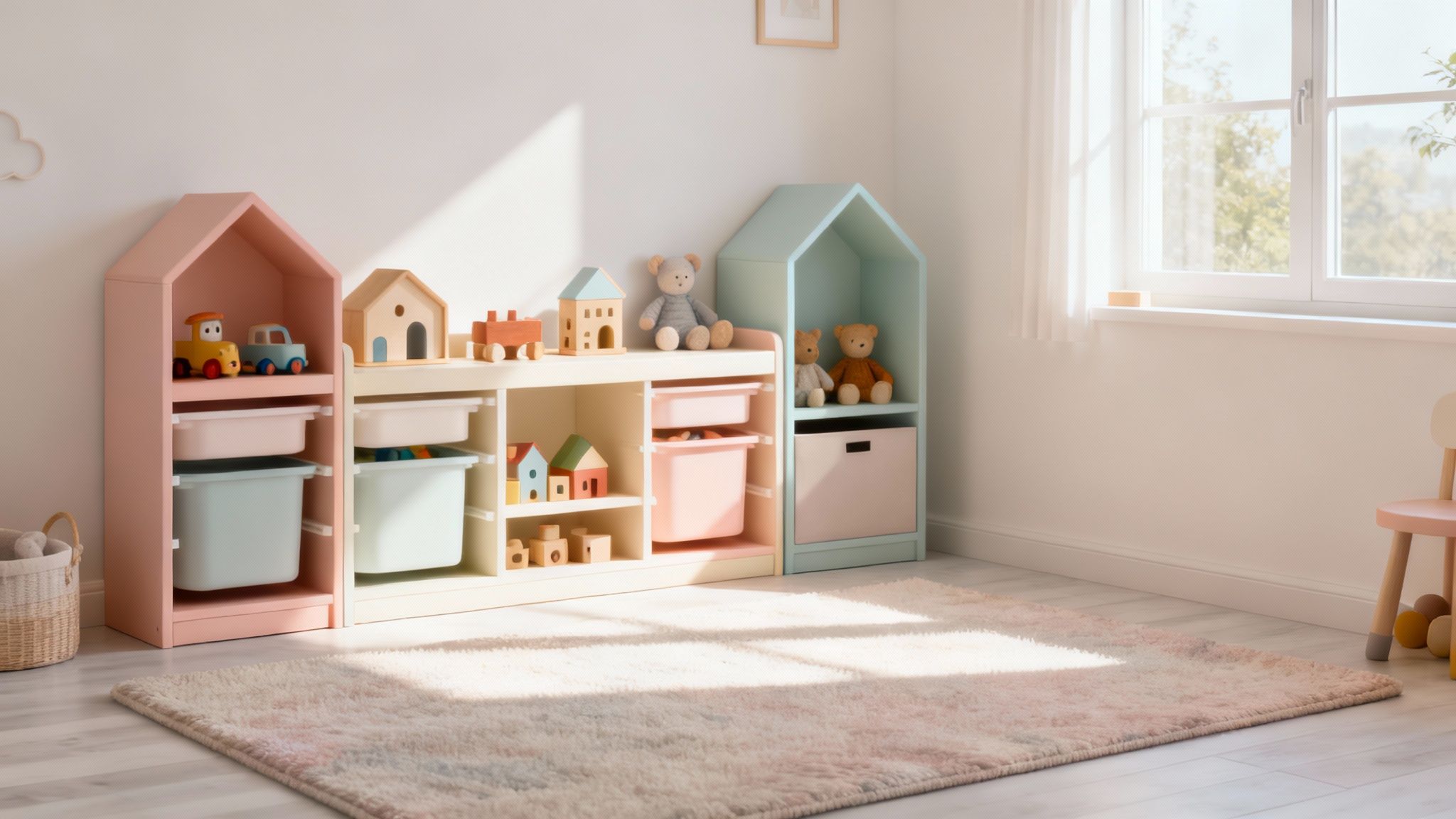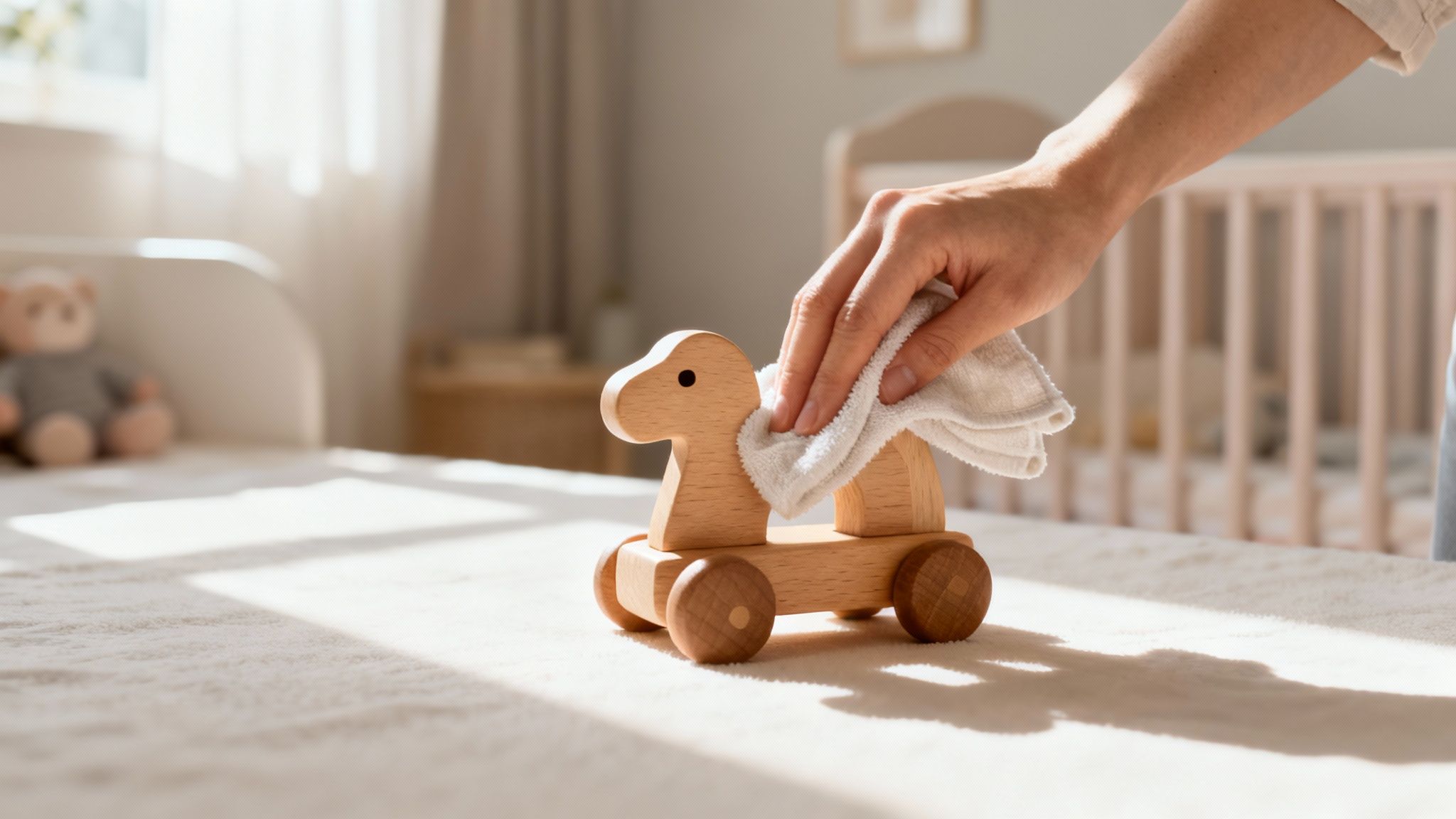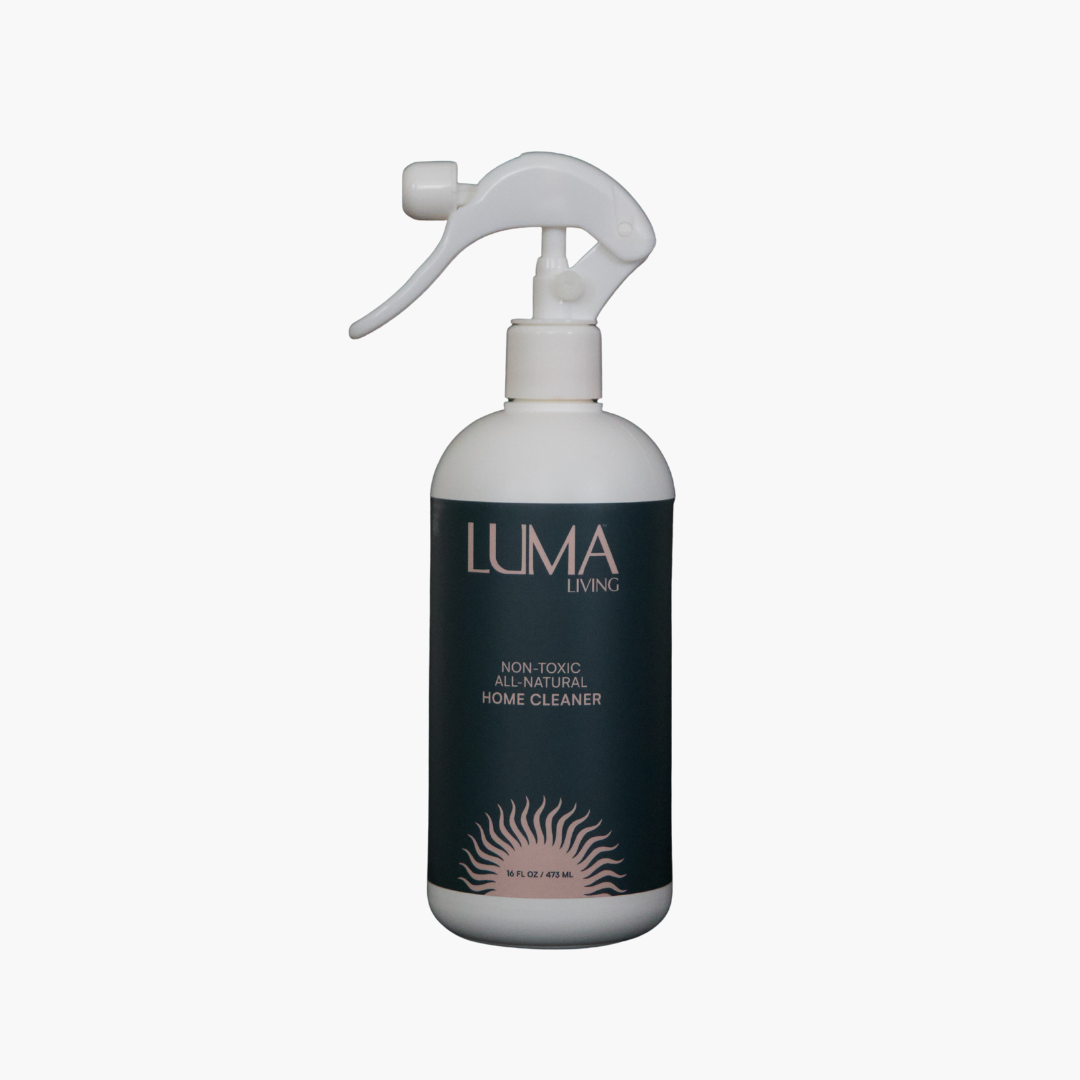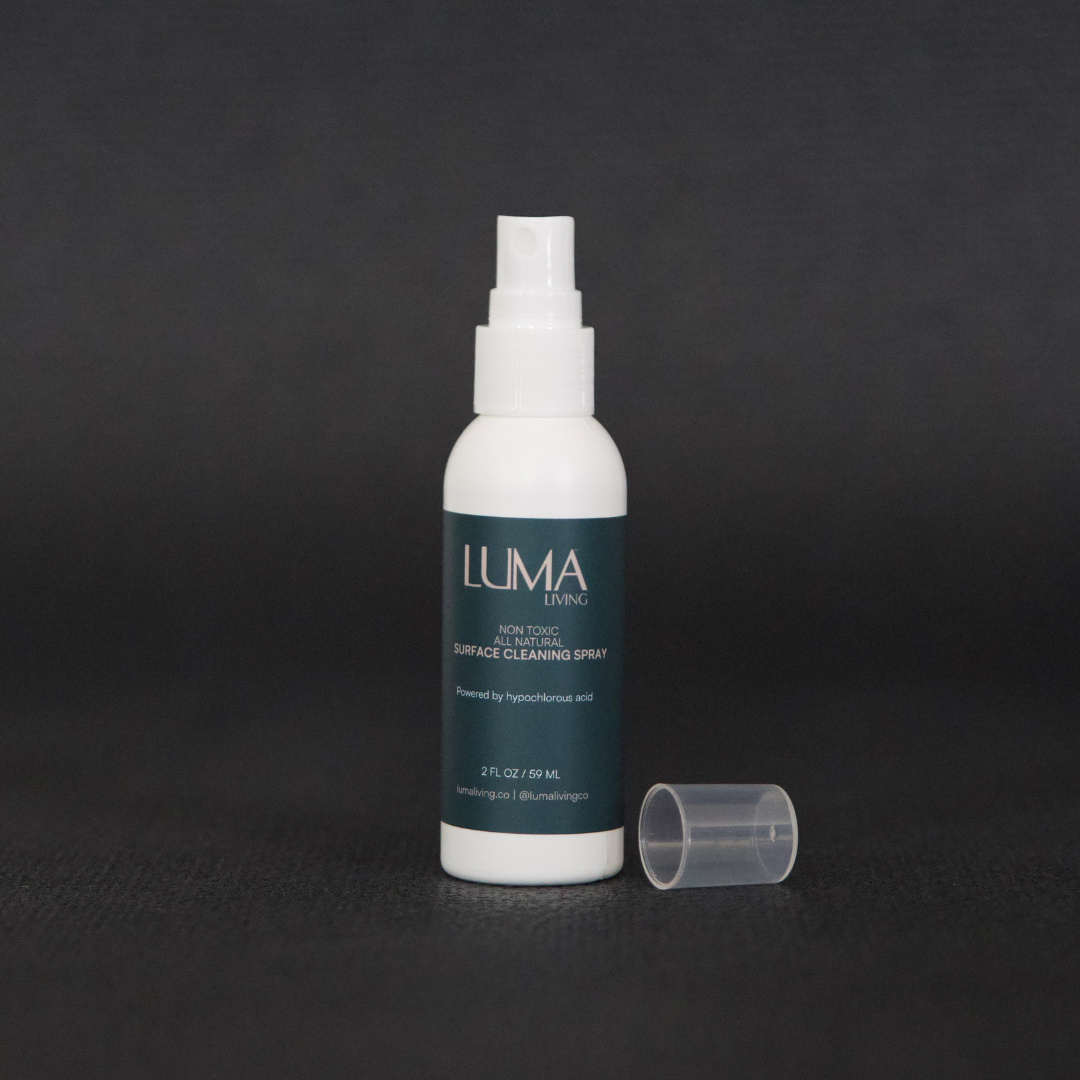Keeping a home clean for a little one changes your perspective. It becomes less about removing visible grime and more about creating a safe space for them to explore. Children touch, taste, and experience the world with their hands and mouths.
A non-toxic toy cleaner supports this exploration. It uses simple ingredients to clean surfaces effectively without leaving behind harsh residues or fragrances. It is an informed approach that helps create a calm, healthy home for your family. Here’s how to clean safely and simply.
Creating a Safer Space for Play and Peace of Mind

The goal of every parent is to build a nurturing environment for their child. A common challenge is keeping toys clean without using harsh chemicals or strong fragrances. This guide offers a calm, confident approach to cleaning your home. It centers on the well-being of your family and pets.
This method is not about complex routines or aggressive formulas. It is about achieving a truly clean home with simple, science-backed solutions.
A Focus on Simple and Safe
The objective is not a sterile environment. It is about maintaining a healthy baseline that supports both play and your peace of mind. A simple cleaning rhythm is all that is needed to manage daily grime from playtime.
This means moving away from conventional cleaners that can leave behind unwanted chemical films. It is about choosing a solution that works well without compromising your home's safety. This creates a space where kids and pets can thrive.
A truly clean space is one where you do not have to worry about what was left behind. It is about the absence of residue and the presence of calm.
Building a Foundation of Trust
Confidence comes from understanding what you bring into your home. When you choose a non-toxic toy cleaner, you make an informed decision. This choice supports your family's health and well-being.
This small shift helps turn your home into a sanctuary. It is a key step toward cleaning toys safely and simply. You can extend this mindful approach to your entire house by adopting healthy home cleaning strategies. A consistent, gentle routine creates a healthier environment for everyone.
Why Gentle Toy Cleaning Matters for Your Family
Young children learn about the world with their hands and mouths. Everything they touch becomes a tool for discovery. This is why a gentle approach to cleaning their toys is so important.
Choosing a simple, safe cleaning routine is about more than surface dirt. It helps create a calm, healthy home where you do not have to second-guess surfaces. Using a cleaner free from harsh chemicals removes worry about sticky residues. It also avoids overpowering fragrances on the things they hold most dear.
A non toxic toy cleaner simplifies life. It provides the peace of mind to focus on what matters most.
The Practical Need for a Gentle Cleaner
A child’s body is still developing, making them more sensitive to their environment. The items they interact with daily should be free from unnecessary additives. This is especially true since many of those items end up in their mouths. Many conventional cleaners leave behind a chemical film you cannot see.
This is where residue-free cleaning becomes so important. A gentle cleaner removes grime and stickiness without leaving anything new behind. Once a toy is clean, it is just clean. This simple switch reduces your family’s exposure to potentially irritating ingredients.
The need for non-toxic solutions goes beyond toys. We see it in choices parents make for things like non-toxic pacifiers. By consistently choosing gentle options, you create a safer space for your child to explore.
The Emotional Comfort of a Safer Home
Your choice of cleaner affects the feel of your home. A house that smells of harsh chemicals can feel sterile and unwelcoming. A fragrance-free cleaner helps maintain a peaceful atmosphere. The only scents are those from daily life, like baking or fresh laundry.
That sense of calm is invaluable. Knowing your cleaning routine is safe for everyone, including pets, removes a layer of anxiety. It provides confidence that you are making thoughtful choices for your family.
More parents are looking for these safer options. The market for toy cleaning concentrates reflects this shift toward products that help create healthier homes. This infographic shows the difference between a harsh bleach cleaner and a gentler, science-backed HOCl cleaner.

A gentle, residue-free solution provides an effective clean. It avoids the high chemical exposure associated with bleach-based products.
Common Misconceptions About Cleaning Childrens Toys
When keeping homes clean for little ones, it is easy to fall back on familiar methods. Sometimes, those habits are built on ideas that do not fit a modern family's needs. The goal is a simple, effective routine that provides peace of mind.
Many people reach for disinfectant wipes or diluted bleach solutions. They believe a stronger chemical means a better clean. While these products have their uses, they were not designed for toys that children put in their mouths. They often leave behind chemical residues and strong, lingering smells.
It is helpful to question some of those old cleaning rules. It is about finding a balanced, science-backed approach that feels right for your home.
The Myth of Harsh Cleaners
There is a common belief that a surface needs a powerful chemical to be truly clean. This mindset leads many to use cleaners that are overkill for everyday situations. A typical playroom cleanup involves dust, sticky fingerprints, and leftover snack residue. A gentle, non toxic toy cleaner can handle that without harsh ingredients.
Another misunderstanding is that "clean" has a certain smell, like pine or lemon. Those strong scents are added fragrances, not a sign of a job well done. A truly clean toy should smell like nothing at all.
Peace of mind comes from knowing that what you use to clean is as safe as the surfaces you are cleaning. The best solution leaves nothing behind—no residue, no fragrance, no worry.
Are DIY and “Natural” Always Better?
Conversely, there is an idea that any homemade solution is automatically safer and more effective. A simple mix of vinegar and water has its uses. However, it is not always the best option for every toy. The acidity in vinegar can degrade certain plastics or damage the finish on wooden toys over time.
Additionally, some DIY concoctions cannot cut through the unique grime toys attract. They can leave behind a sticky film or fail to lift off stubborn messes. The word “natural” is not regulated, so it is more helpful to look at a product’s ingredients and the science behind them. Finding the limits of both harsh chemicals and some DIY solutions opens the way for a better alternative.
Comparing Common Toy Cleaning Methods
| Cleaning Method | Key Characteristic | Consideration for Families |
|---|---|---|
| Diluted Bleach | Strong chemical action. | Can leave harsh residues and strong fumes unsuitable for children's items. |
| Disinfectant Wipes | Convenient single-use application. | Often contain alcohol and fragrances that leave a sticky film behind. |
| Vinegar & Water | Acid-based DIY solution. | Can be ineffective on greasy grime and may damage certain materials over time. |
| Soap & Water | Traditional and gentle. | Requires thorough rinsing to avoid soap residue, which can be time-consuming. |
Choosing a cleaner is about finding a simple, reliable solution that fits into your daily routine.
The Gentle Science of Hypochlorous Acid (HOCl)
There is a way to clean that moves beyond harsh chemicals and ineffective DIY mixes. It is a calmer, science-backed approach centered on a simple molecule: Hypochlorous Acid, or HOCl.
Our own immune system produces HOCl as part of its defense mechanism. This same substance can be created for your home. It offers an effective clean without harsh chemicals, irritating fragrances, or sticky residues. It is a simple solution for modern family life.
How HOCl Is Made
Making Hypochlorous Acid is a process inspired by nature. It begins with just salt and water. A gentle electrical current is passed through the saltwater solution in a process called electrolysis. This simple step changes the chemical makeup of the salt and water, creating HOCl.
The result is a clear, odorless liquid that cleans effectively. When it is done working, HOCl simply breaks down into saltwater again. This means nothing is left behind on surfaces. It leaves no chemical film, no lingering smells, and no worry.
A Residue-Free and Fragrance-Free Approach
A key benefit of a non toxic toy cleaner powered by HOCl is its purity. Many conventional cleaners use heavy fragrances to create the smell of clean. These scents often just cover up the chemical film they leave behind.
HOCl is completely fragrance-free. A genuinely clean surface should smell like nothing at all. This is especially important for homes with little ones, pets, or anyone sensitive to strong scents.
Peace of mind comes from using a cleaner that does its job and then simply disappears. The result is just a clean, clear surface, letting your family play without interference from unnecessary additives.
This commitment to safety and simplicity is becoming a new standard. Stricter safety regulations and informed parents drive the demand for safer products. This creates a need for equally safe cleaners.
Why This Matters for a Family Home
Choosing an HOCl-based cleaner helps create a more harmonious home. Because it is so gentle, you can use it on almost any surface your kids and pets touch daily.
Consider the benefits for your home:
- Safety Around Children: You can clean highchairs, playmats, and toys without needing to rinse them afterward.
- Pet-Friendly Cleaning: Use it on pet bowls, crates, and toys, knowing there is no residue that could be licked up.
- Versatility in the Home: Beyond toys, it is ideal for countertops, cutting boards, and any hard, non-porous surface.
This approach helps lower the overall chemical load in your home. By picking one versatile cleaner, you can declutter your cleaning cabinet. To explore the science in more detail, you can learn more about what Hypochlorous Acid is and how it works.
A Simple Guide for Safely Cleaning All Toy Types
Keeping toys clean does not have to be a complicated chore. All you need is a simple, consistent routine. Using a non-toxic toy cleaner is a minimal process. The goal is to gently remove daily stickiness and grime without leaving anything behind.
This straightforward guide helps you create a simple rhythm for cleaning all types of toys.
The Basic Two-Step Method
For most hard, non-porous toys, the cleaning process is incredibly simple.
- Spray Lightly: Hold the cleaner a few inches from the toy and apply a light mist.
- Wipe or Air Dry: Use a clean, soft cloth to wipe the surface dry, or let the toy air dry completely.
This quick approach is perfect for daily or weekly upkeep. It removes dust and fingerprints, leaving a genuinely clean surface behind.
Adapting for Different Materials
While the basic method works for many items, some materials need a slightly different touch.
-
Wooden Toys: Wood is porous. To avoid excess moisture, spray the cleaner onto a cloth first, then wipe the toy. Dry it with a separate clean cloth right away.
-
Soft Fabric or Plush Toys: For spot cleaning, lightly mist the area and gently blot it with a clean, damp cloth. Let it air dry completely.
-
Electronic Toys: Never spray cleaner directly onto an electronic toy. Instead, spray a small amount onto a microfiber cloth until it is just damp. Carefully wipe down the outside.
The core principle is always simplicity. A gentle cleaner should work with the material, not against it, giving you a reliable clean without any risk of damage.
Creating a Simple Rhythm
When you establish a gentle cleaning rhythm, it becomes an automatic habit. Try a weekly tidy-up where you gather the most-used toys for a quick spray and wipe.
Toys that end up in a little one's mouth benefit from more regular attention. You can find more detailed tips in our article about safely cleaning infant toys. This small action supports your family's well-being.
Creating a Clean Home with Confidence and Trust

Real confidence in your home comes from the small, thoughtful choices you make every day. When you choose a simple, science-backed non toxic toy cleaner, you are building a foundation of well-being. You are gaining true peace of mind.
It is about knowing your home is a safe space for everyone. That quiet trust in your surroundings is what truly matters.
The Foundation of a Healthy Home
The move toward safer, non-toxic products is not just a passing trend. It reflects a deeper understanding of what it means to keep families healthy. This is especially clear when it comes to products for children.
The global market for non-toxic toys shows significant growth. This is fueled by parents actively looking for products that fit a healthier lifestyle. You can discover more about this consumer trend and how it’s shaping the market. This same mindset extends to how we clean those toys.
True clean is not about what you add, but what you take away—the grime, the stickiness, and the worry. It is the simple confidence of knowing a surface is ready for play, with nothing left behind.
Embracing Simple and Effective Care
At Luma Living, our approach is all about gentle solutions. We believe in home care that delivers an effective clean without compromise.
By understanding how a gentle ingredient like Hypochlorous Acid works, you become an informed caretaker of your home. We have put together a guide to help you learn more about how this molecule functions, which you can read here: understanding what is sometimes called a disinfectant spray.
It all comes back to feeling good about the choices you make. A clean home built on trust is a home where everyone can thrive.
Your Questions, Answered
Bringing a new cleaner into your home comes with questions. When it comes to products used around your family, you deserve clear answers. Let's address some common questions parents ask about gentle cleaners.
Our goal is to provide complete confidence. When you understand how a product works and why it is safe, it is easier to trust it.
Is It Truly Safe for Babies and Pets?
Yes, a well-made hypochlorous acid (HOCl) cleaner is one of the gentlest you can use. It is created with just salt, water, and electricity. Once it does its job, the solution breaks down into saltwater again, leaving no harsh chemical residue behind.
This is a significant benefit for parents and pet owners. You can spray a highchair tray, a pacifier, or a pet’s water bowl without needing to rinse.
Can I Use It on All Types of Toys?
Yes, a high-quality non toxic toy cleaner is versatile enough for almost any material.
- Hard, Non-Porous Surfaces: Perfect for plastic blocks, action figures, and silicone teethers.
- Sealed Wood: Works well on sealed wooden toys. Spray a cloth first and wipe it down to avoid over-wetting the wood.
- Fabric Items: You can use it for light spot-cleaning on a favorite stuffed animal or playmat.
For anything with batteries, always spray the cleaner onto your cloth first. This keeps moisture away from the sensitive electronics inside.
How Is This Different from Just Using Soap and Water?
Soap and water is a classic for a reason—it is gentle. The main drawback is the need to rinse thoroughly. If any soap is left behind, the surface can become sticky. That sticky film can attract more dirt over time.
An HOCl cleaner is residue-free. You just spray and wipe, or let it air dry. It is a simple, one-step process that saves time and leaves the surface genuinely clean.
How Often Should I Clean My Children’s Toys?
Consistency is more effective than infrequent deep cleans. A simple routine makes everything more manageable.
- Daily: Give a quick spray to anything that ends up in a baby's mouth, like teething toys.
- Weekly: Wipe down the toys that get the most use, like blocks, play food, and dolls.
- As Needed: Clean any shared toys after a playdate or anything that looks visibly dirty.
This keeps cleaning from feeling like a chore. It becomes a small, easy part of your weekly flow that helps maintain a safe space.
At Luma Living, we believe in simple, science-backed solutions for a safer home. Our HOCl-based cleaner delivers an effective, residue-free clean for toys, highchairs, and other surfaces. It is the confidence that comes from cleaning without compromise. Learn more about our approach at Luma Living.


